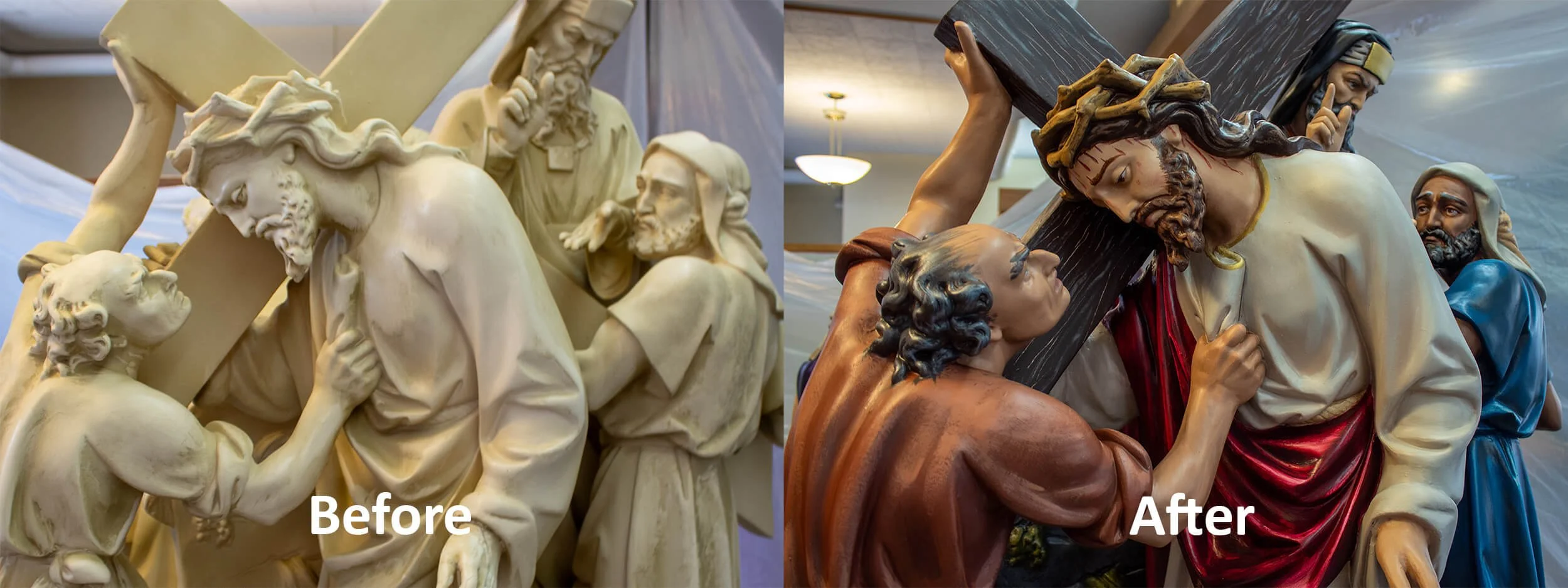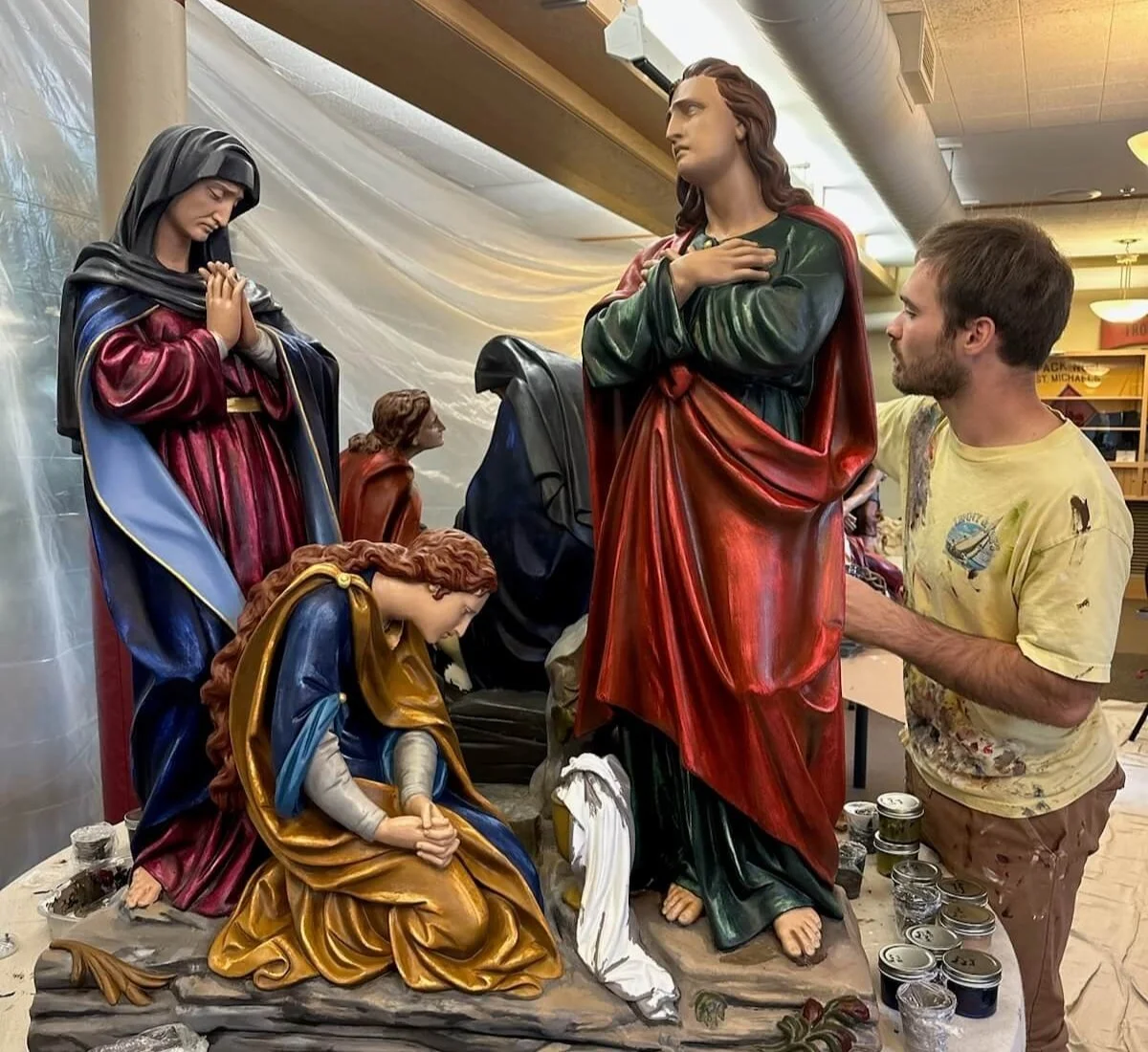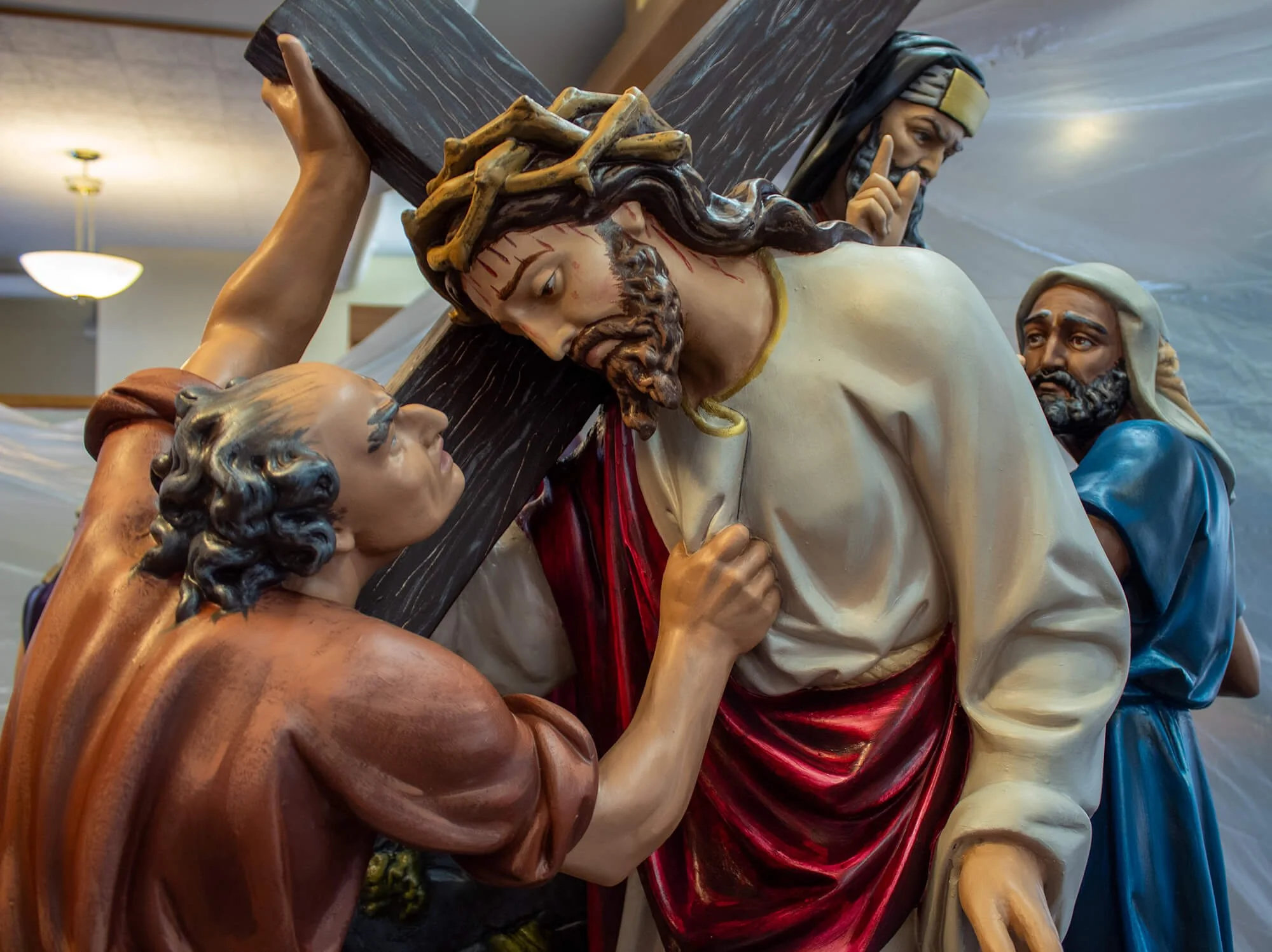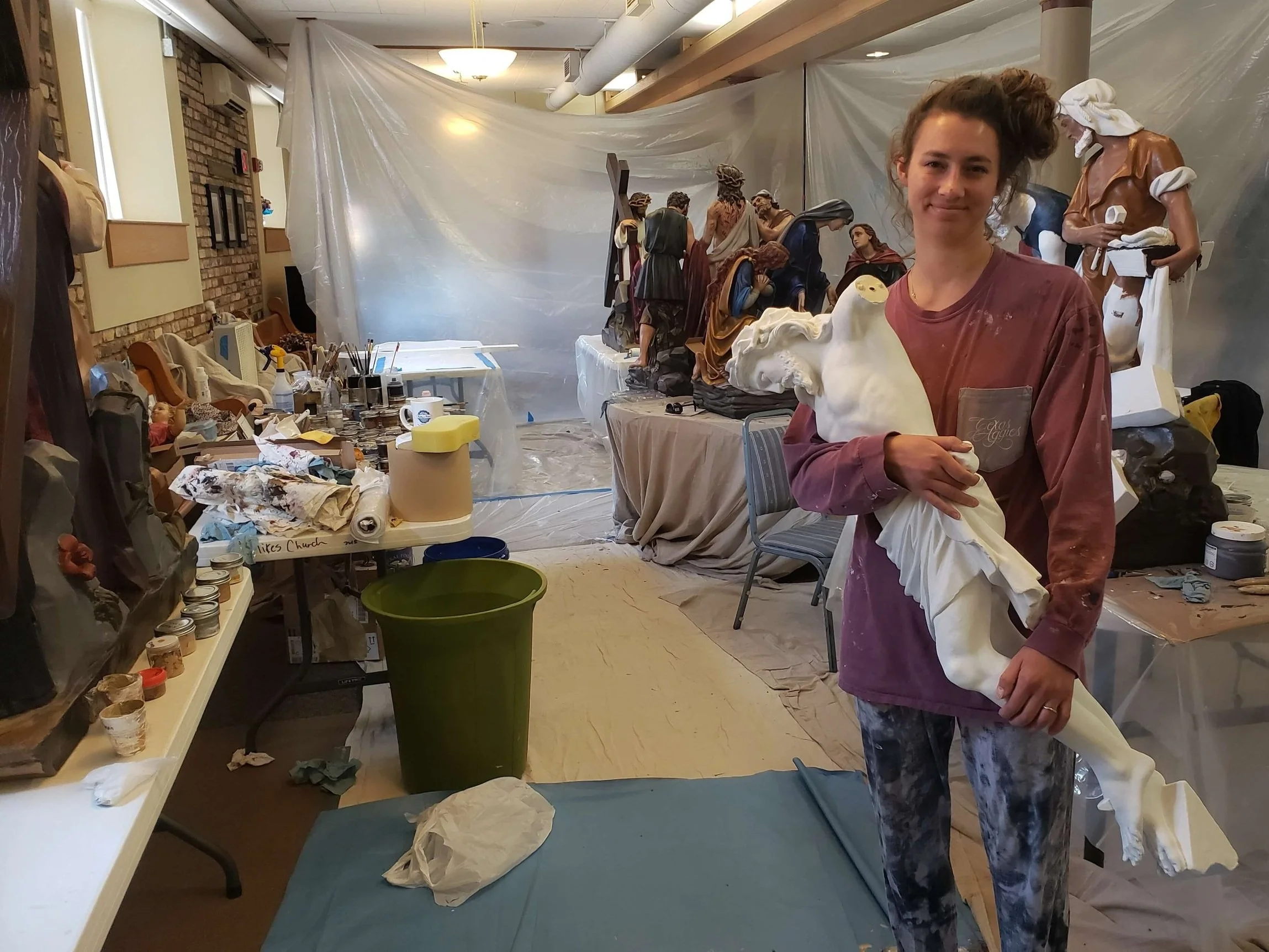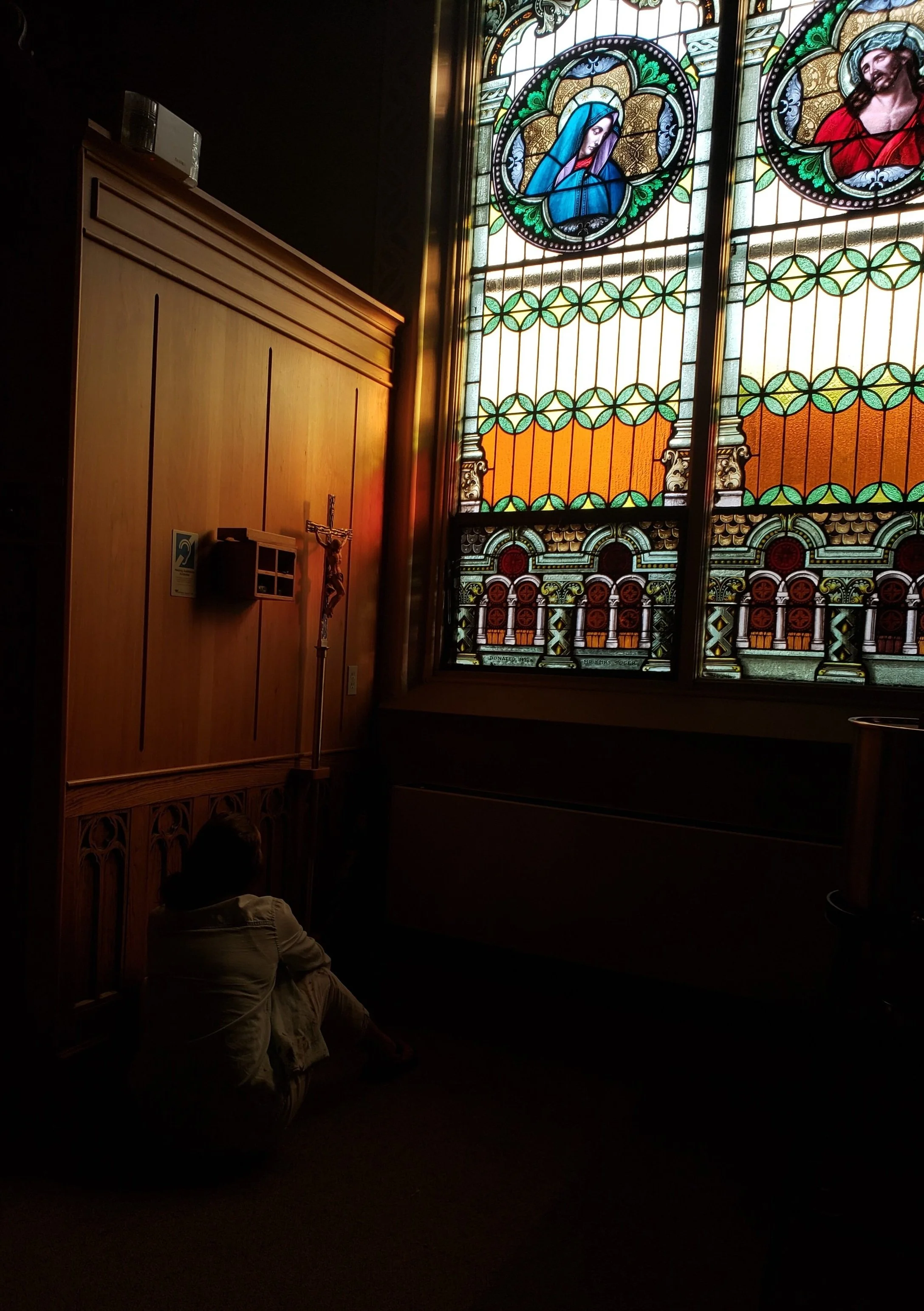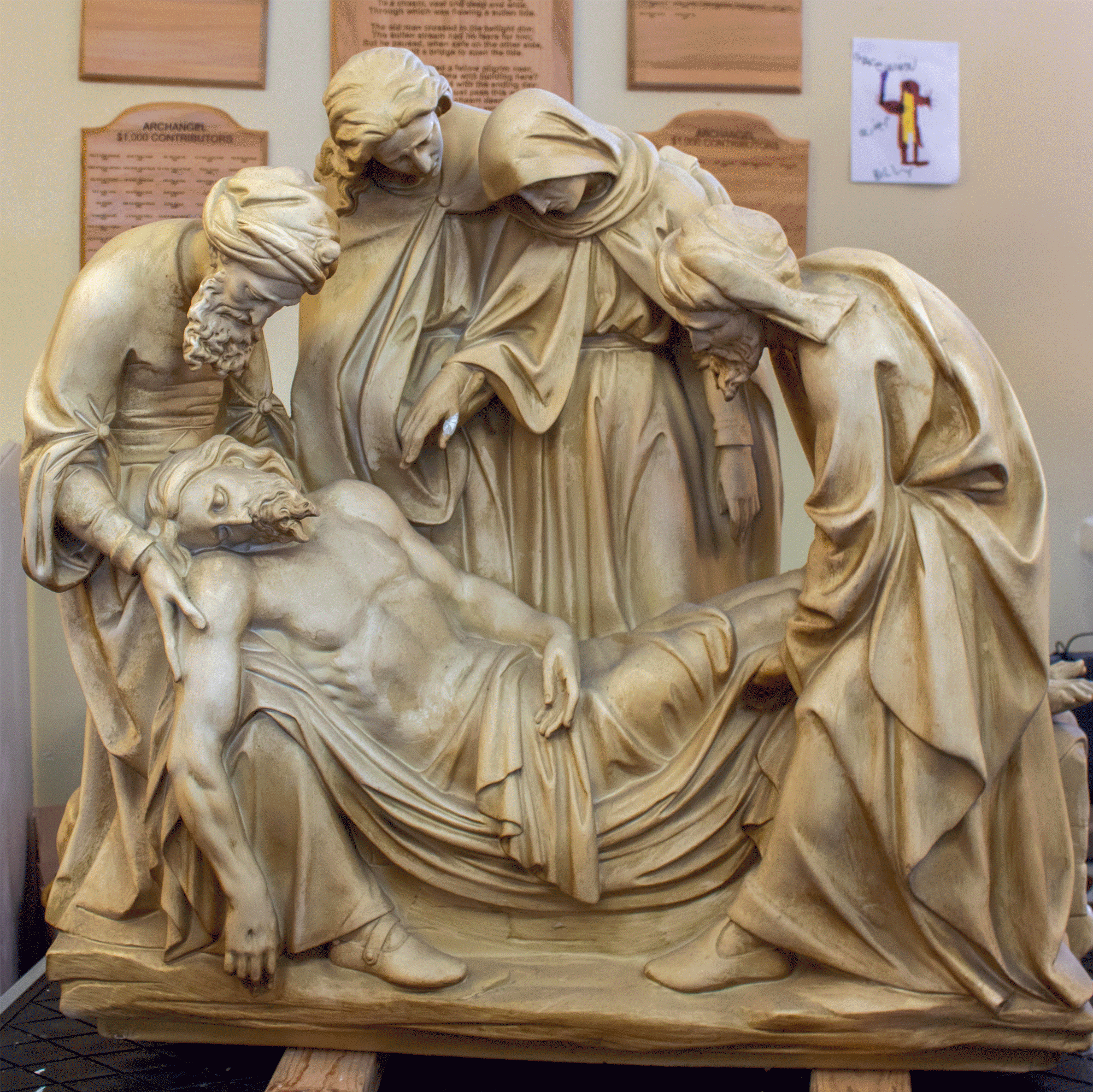Statue Restoration
Below I describe my process and experience painting the Stations of the Cross at St. Michael’s Parish in Grand Forks North Dakota.
Preparation
In order to ensure the immaculate restoration of statues they need to be thoroughly cleaned and then meticulously prepared for professional artist paint. Specialized cleaning solutions and tools are used to ensure an effective and gentle cleansing, safeguarding the integrity of the statue. We then repair or replace broken parts and remove old paint through careful chipping and sanding. Then several layers of paint specifically designed to prime the surface are added. These steps are not only crucial in achieving optimal results for the new paint, but they also rejuvenate the statue making it less brittle.
Painting
Once the statues are prepared for painting the real artistry begins. This involves deciding how to highlight and shade the statues. Some figures might need high contrast so they draw more attention or some fabrics might need to be more lustrous than others. Maybe the most important decisions I make are the colors. Color evokes profound emotions that bond people to the artwork. So it’s crucial for an artist to carefully chose colors that direct the viewer closer to Holy Scripture.
Using a brush allows me to emphasize the textures that one would see in real life. An airbrush makes the process quicker but doesn’t show texture. It can also make the statues look like they came from a factory. With a brush, I leave more of a human touch with the artwork.
Finishing
I add the final details, wait for the statues to fully dry then give them protective layers. These layers help protect the statues from UV damage, dusting, and cleaning so that the statues continue to look beautifully alive for generations to come
Working for the Church
My team and I are honored to be able to make art that praises God and helps others to do so as well. I can’t think of a more important goal of art.
My team and I love the engagement we have working in the church and being able to pray in our workspace.
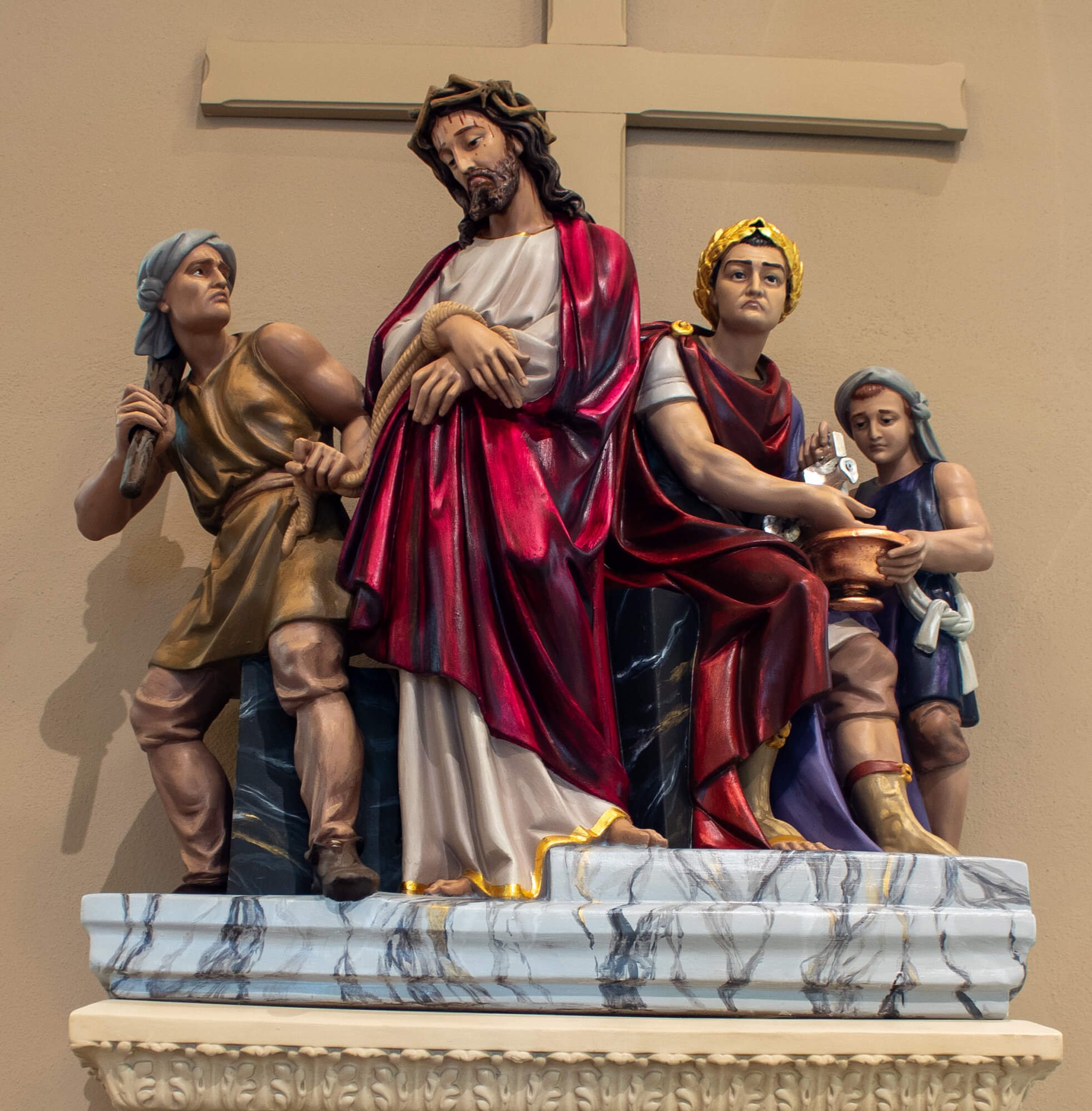
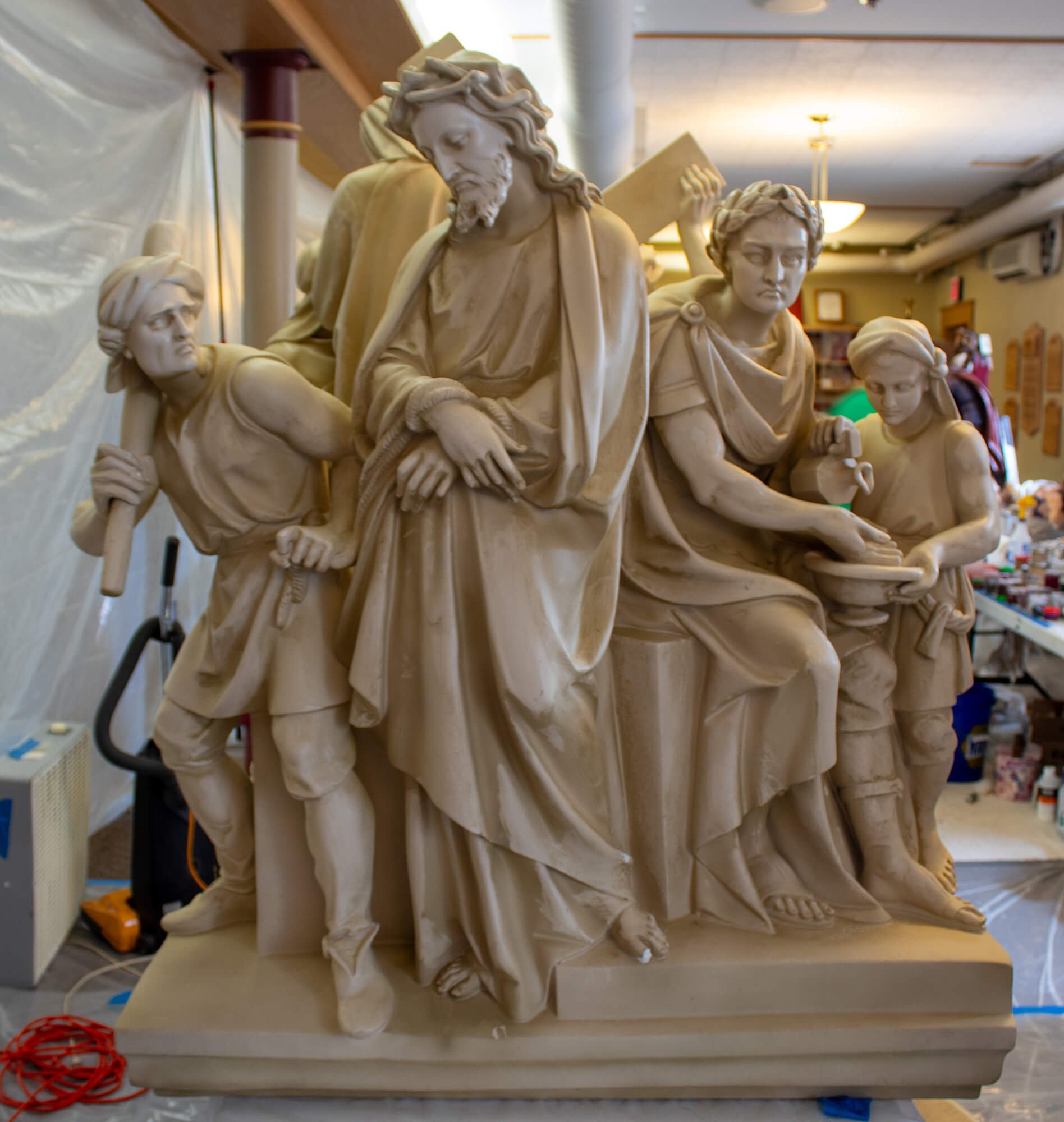
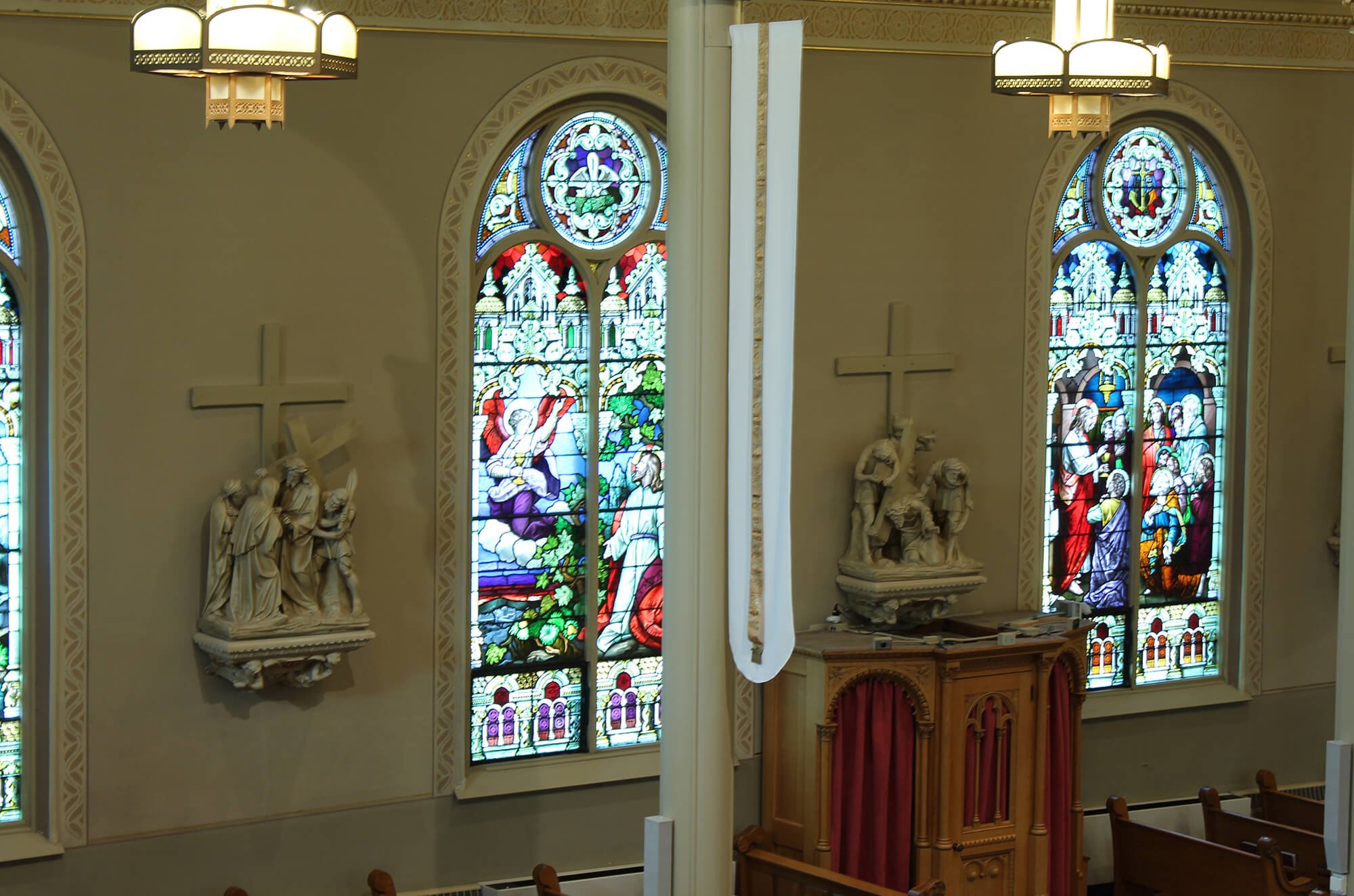

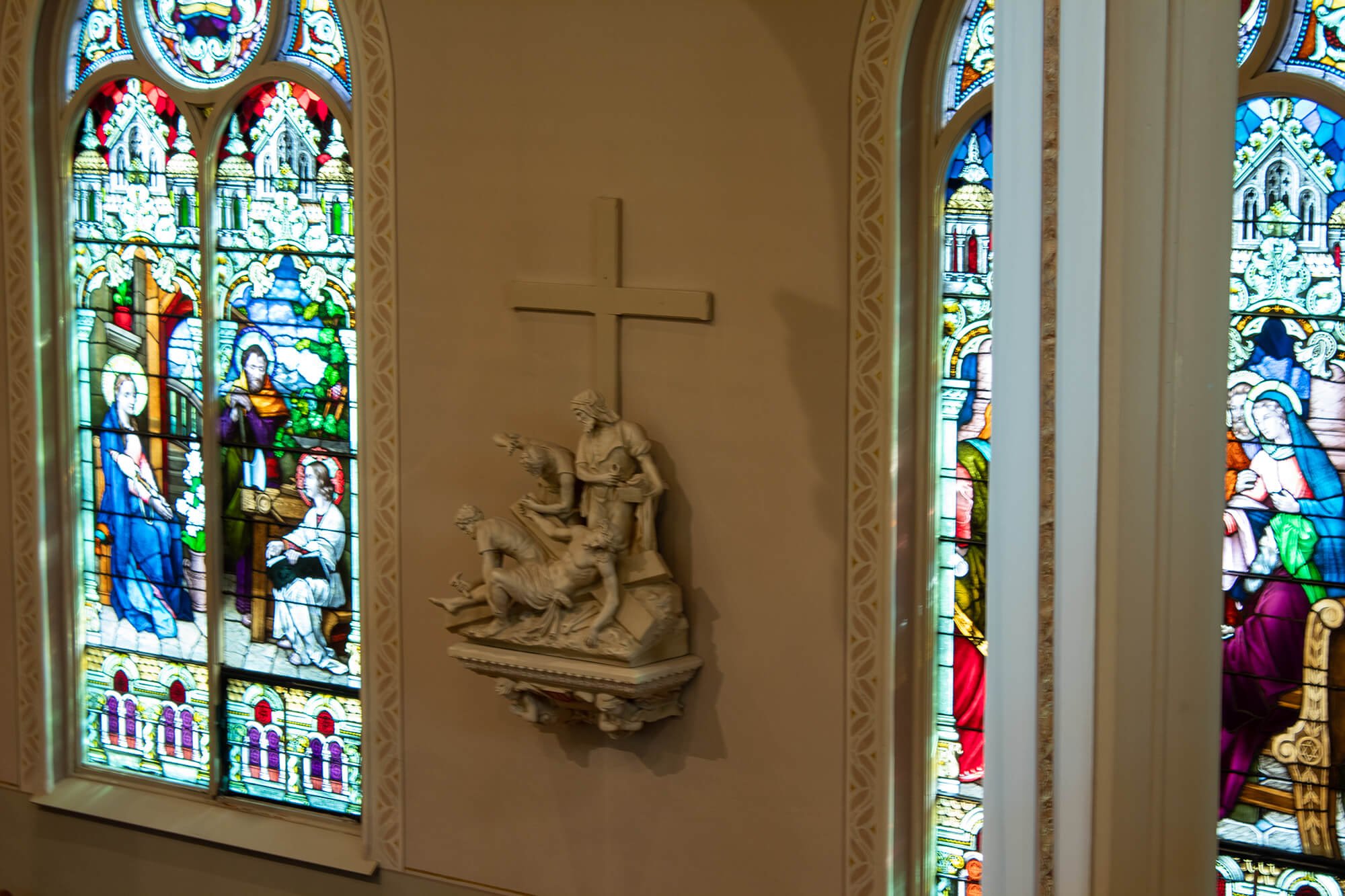
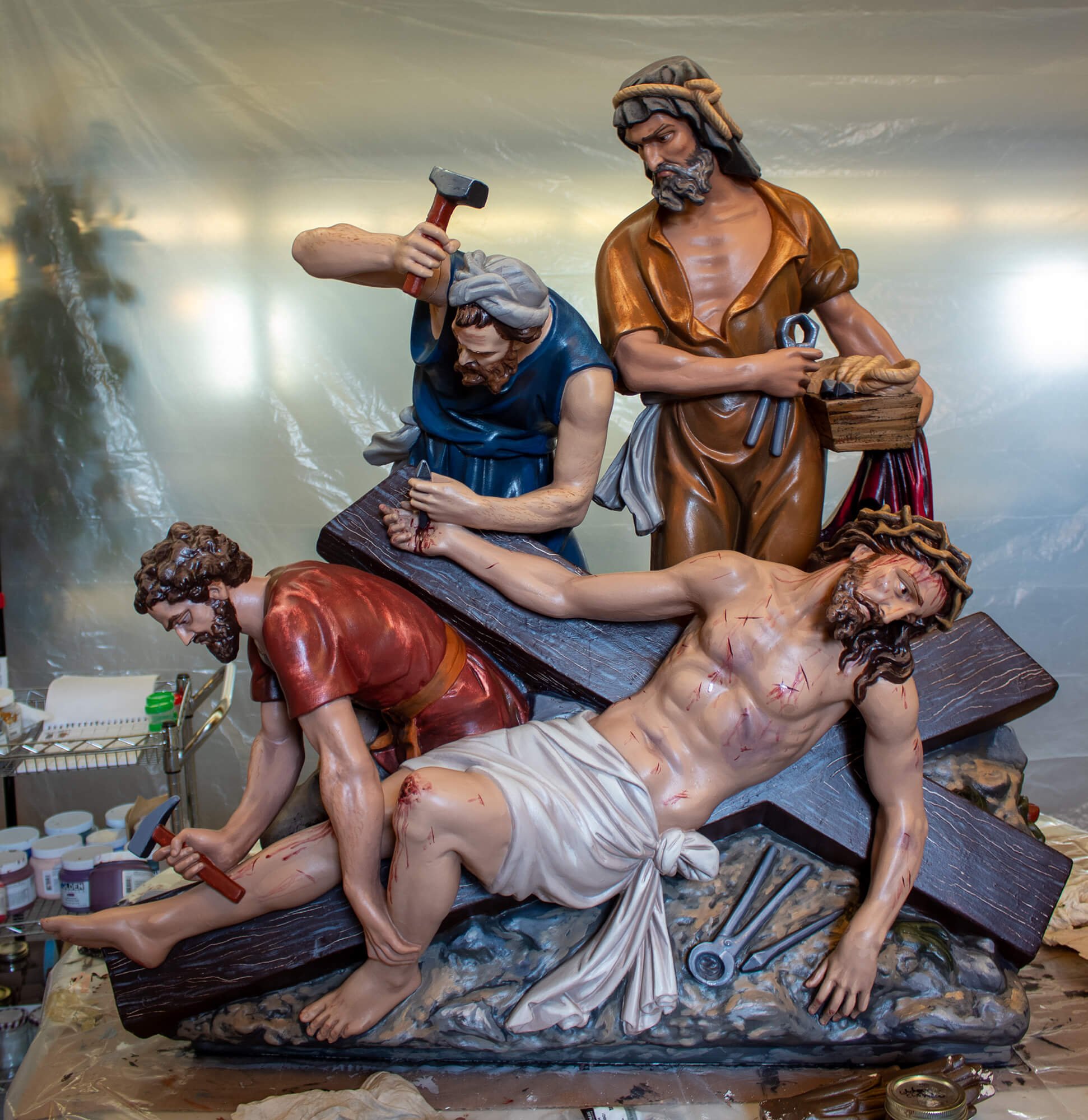
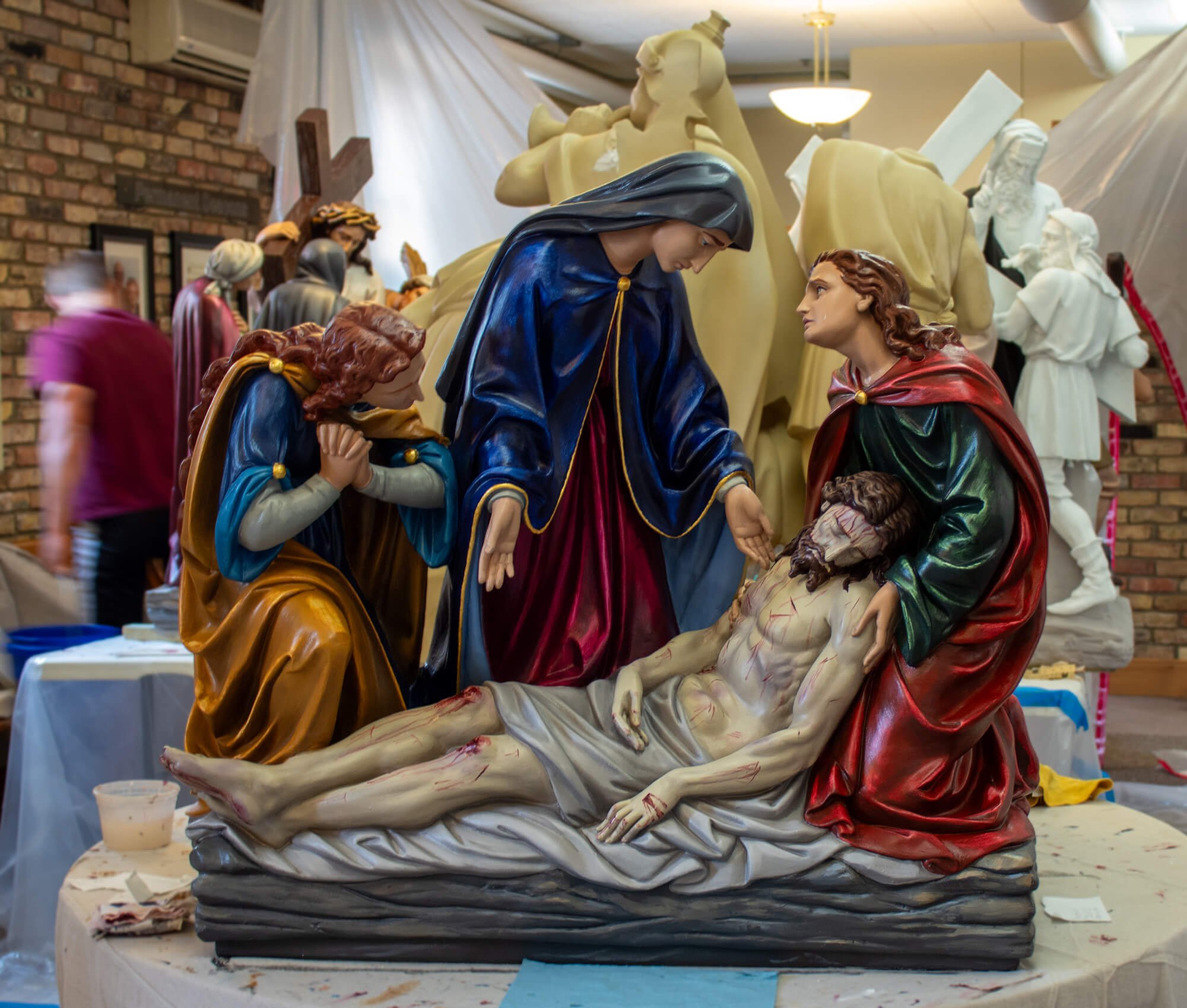
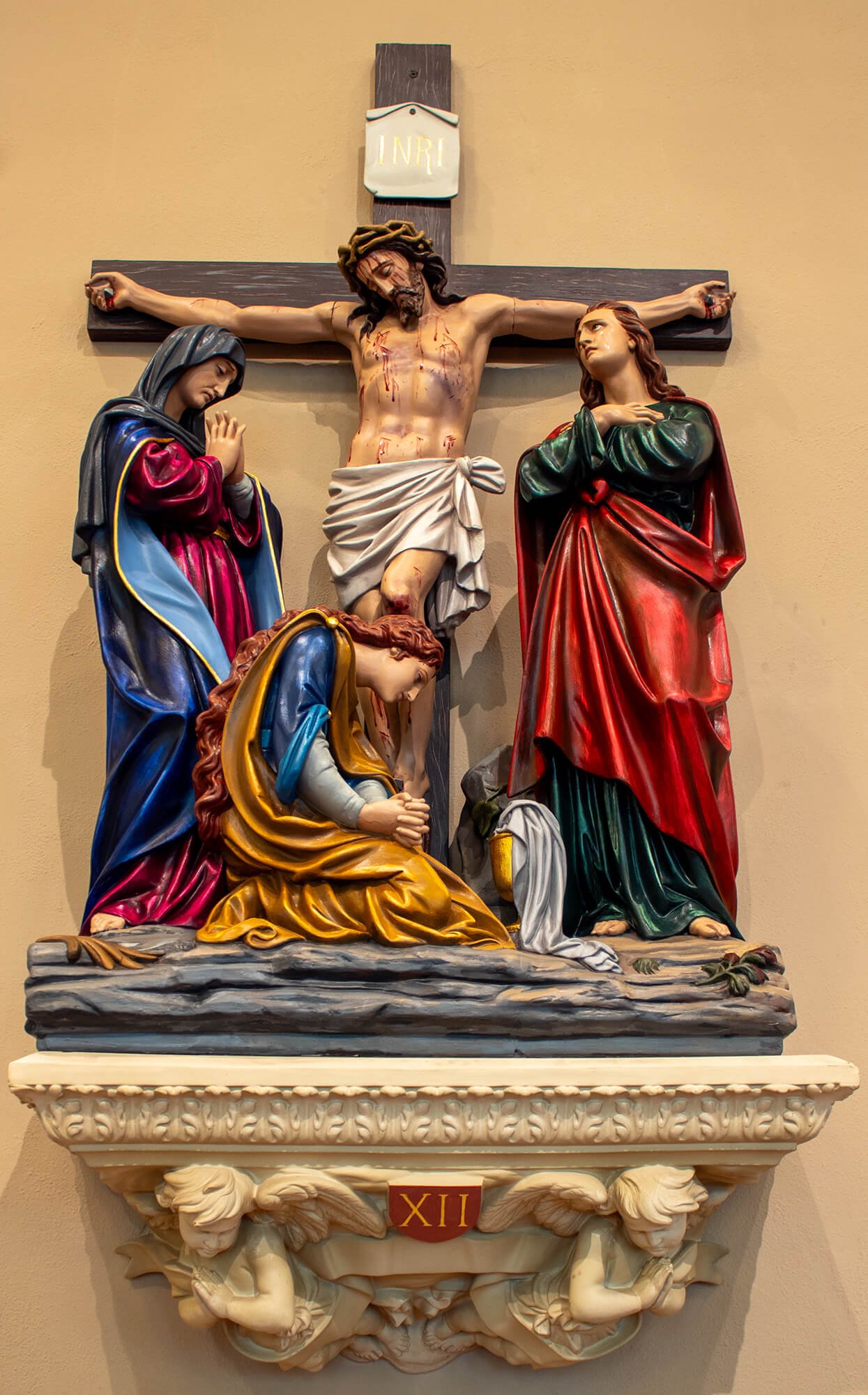

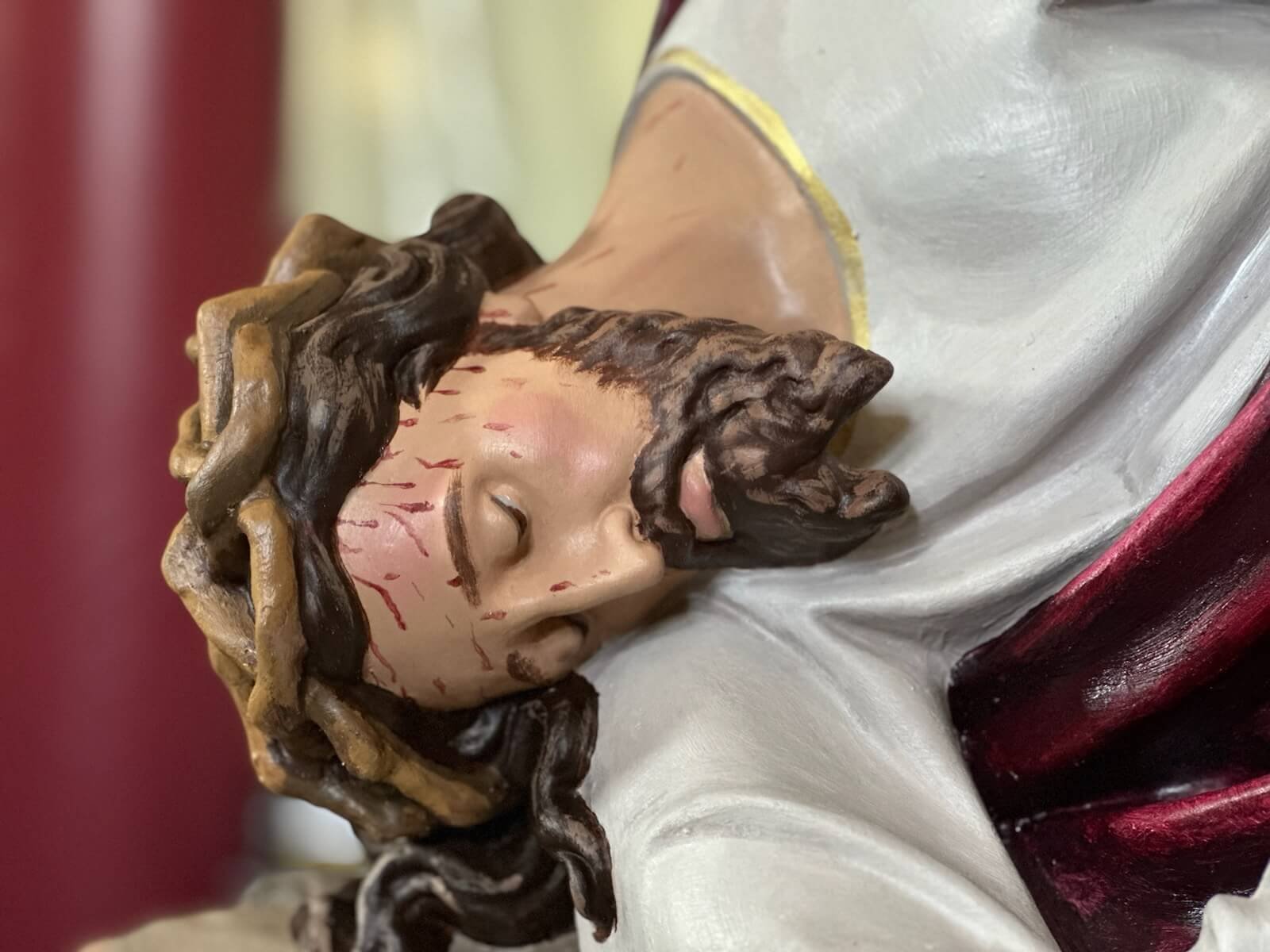

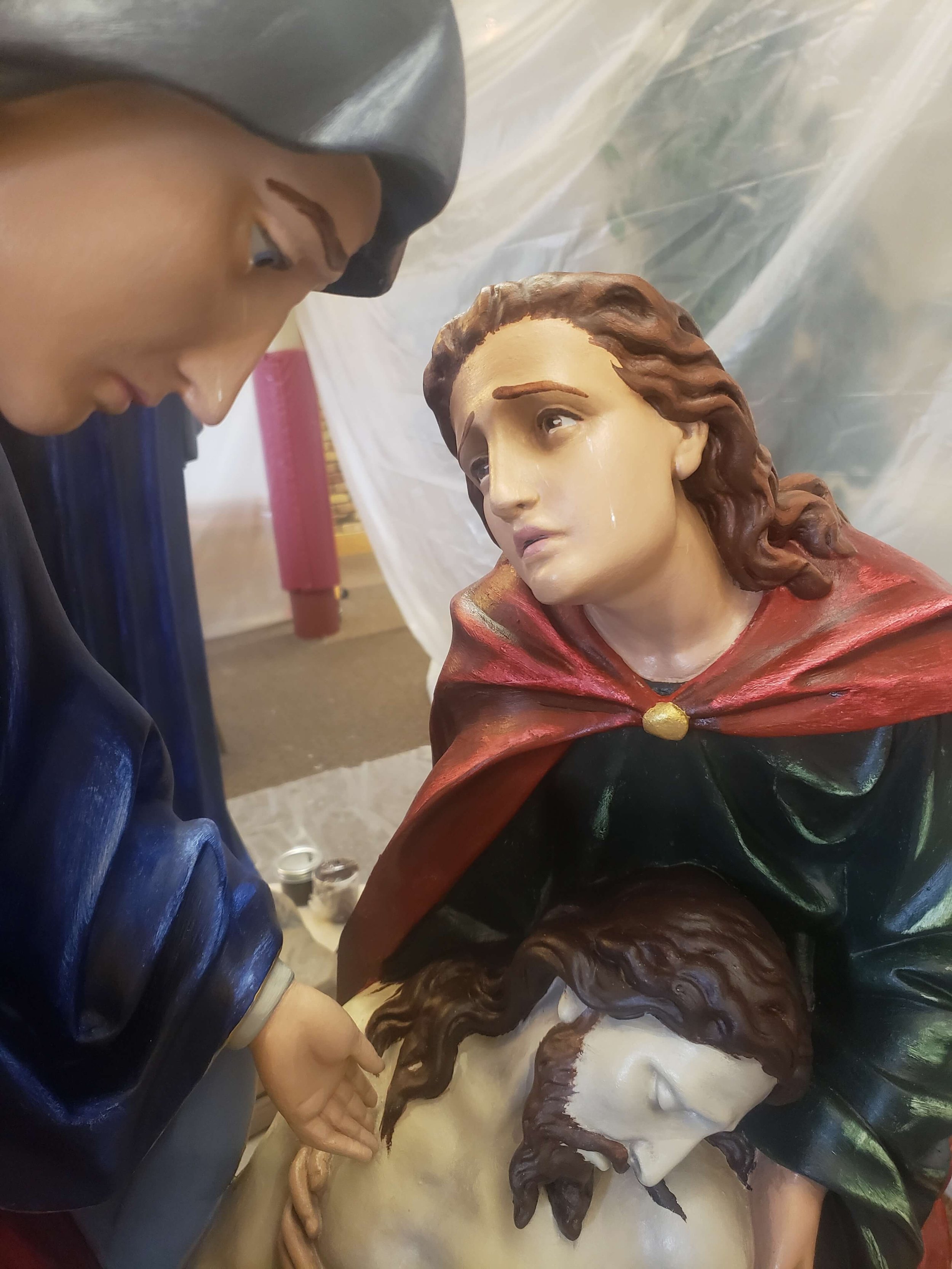
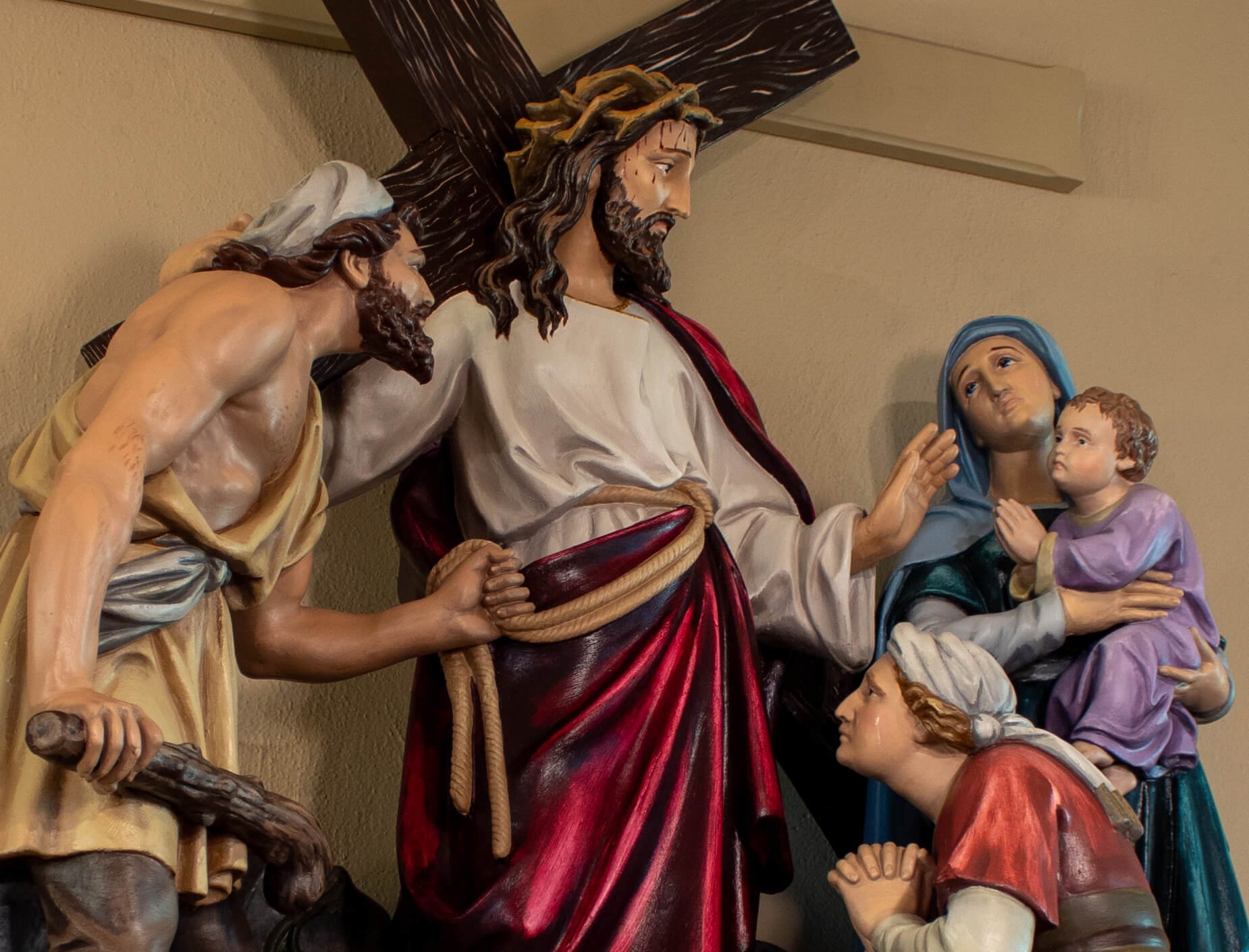


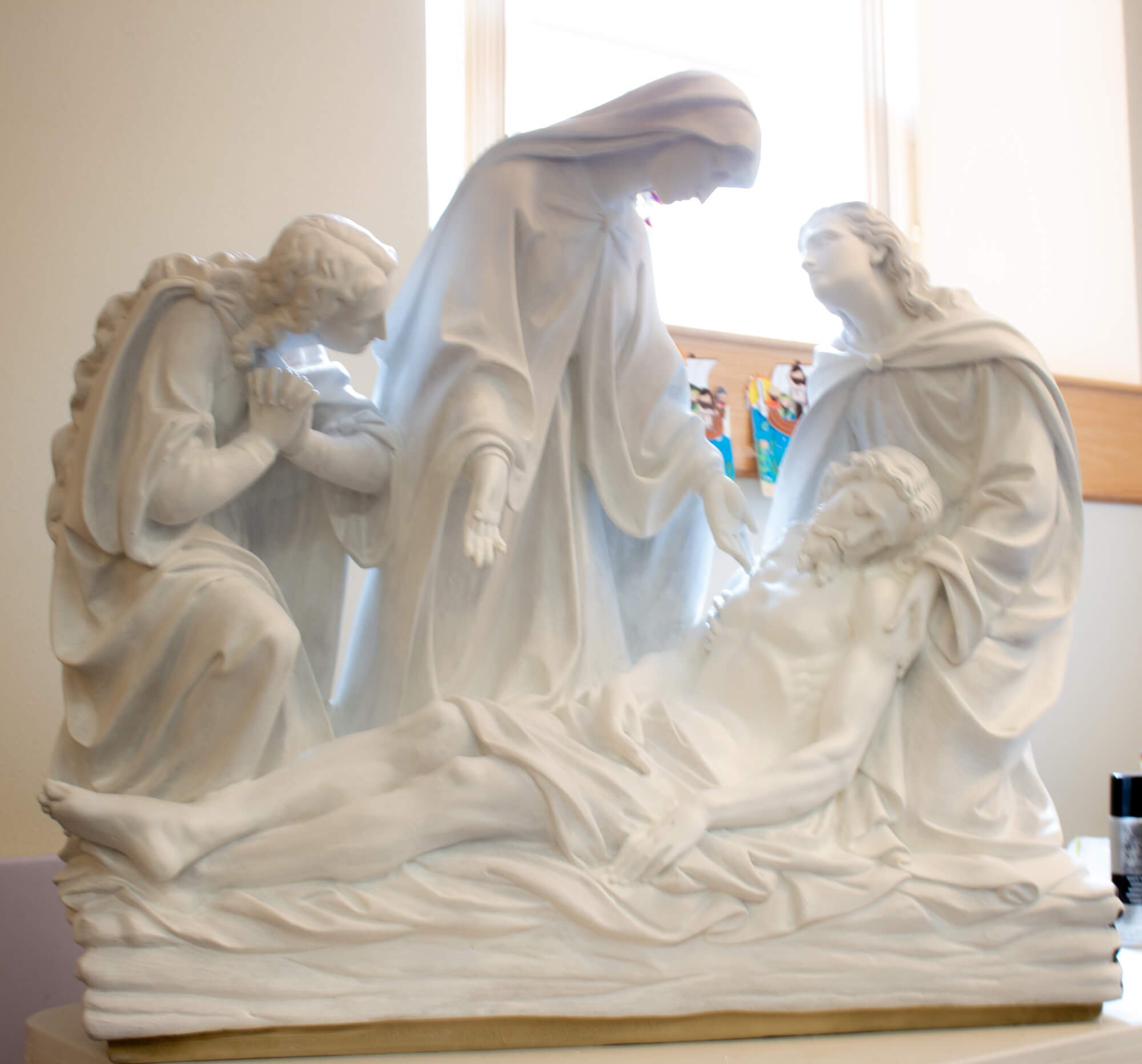

Contact us
All projects welcome. No job is too big or too small
Letter for St. Michael’s Parish Bulletin
When I first heard that Father Courtright wanted to paint the stations of the cross at St. Michaels I was hesitant. Born and raised in Grand Forks, St. Michael’s has always been my understanding of what a Catholic Church should look like. I used to look up at those statues in awe and wonder, but I’d also be trying to comprehend them. As I engaged with their shapes of light and shadow I thought of them as being quite abstract like otherworldly forms. I did not see them as scenes of the passion of Christ. I saw the stations the way I was inclined to. Similarly, Father pointed out that in the first station, the club looks like a baseball bat. After considering the importance of witnessing Christ’s passion, I knew they needed to be painted.
When I was a teenager kneeling in St. Michaels, I distinctly remember asking God to make me an artist who was good enough to do something for a church like this one. This church has had profound impacts on me both consciously and unconsciously as an artist. While completing my Masters in Art, I tried to figure out where my stylistic inclinations came from. I realized it was from St. Michael’s and in particular its stained glass windows. I read that the founder of the Chicago workshop, Munich Studios, was influenced by Renaissance artists such as Bellini, Tintoretto, and Titian. It is no wonder they are some of my favorites as well. I revere the windows in this church and am influenced by them every time I gaze at them. As I paint the stations of the cross I am not worried about distracting from them because how could I!? Powered by the sun they are too big, powerful, and beautiful to be distracted from even by a movie screen. Instead of worrying about being a distraction, I consider how I can compliment the windows through color. The windows depict scenes of joy and revelation, thus their colors are bright and royal. The stations depict a somber subject, thus I tone them down and give them melancholic colors such as jewel tones.
It has been a spiritual experience painting in the basement of the church. I get to be near weddings, funerals, Mass, adoration, and all the wonderful people that find opportunities for service and community through the church. St. Michael’s is certainly alive! It’s been a joy to talk with people that stop by to visit. What more can an artist want than to have their work be seen and discussed? I wouldn’t have this opportunity if it weren't for the generous donations of parishioners. I can’t think of a better recipient of art than the people looking to beautify their church. Many of the most famous artworks were paid for not by the church, but by parishioners, such as how Giotto was commissioned by a wealthy banker for his landmark paintings in the Scrovegni Chapel or how the Painted Churches in Texas were funded by and painted by the immigrants that moved there from Germany and the Czech Republic.
I am not Giotto, but I recognize the sacredness of this task. With that in mind, I want to say thank you for trusting me with this project in our beautiful church. I hope you’re praying that I complete it the way God desires!
William Rerick
William Rerick © Copyright 2023

